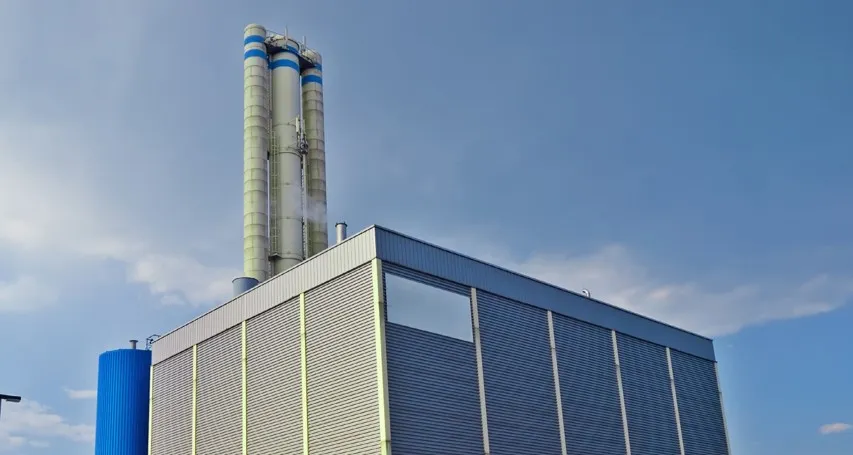Founding Director and Principal Safety Consultant, Steve Beech, shares his extensive experience.
What is “The Golden Thread”?
A clear line between the identified hazard and the associated mitigation is referred to by many organisations as “the Golden Thread”. This clear line is fundamental to effective risk management and safety management systems.

What are the drivers for a simple safety management structure?
The Health & Safety Executive’s document R2P2 identifies that there is a fundamental requirement for those creating risk to explain their decisions on the management of that risk, such that the resulting risk assessments and their control measures may be clearly presented. This will illustrate how the risk owner has met their legal obligations, is ensuring safe and healthy systems of work, and the proper management of health and safety. R2P2 goes on to state that the way an issue is framed can have a considerable influence on judgements about whether risk is actually the crux of the issue and, if so, the effectiveness of the measures that should be put in place for addressing the risk.
This framing of the safety argument is also addressed within the Hadden-Cave Report, in Chapter 22 on Safety Case best practice. It makes the point that Safety Cases should follow six principles:
- Succinct;
- Home-grown;
- Accessible;
- Proportionate;
- Easy to Understand; and
- Document lite.
These principles rose out of the concern that Safety Cases were giving people a false sense of security that a Safety Case is some sort of paper ‘vault’ into which risks may be safely deposited and forgotten about. At the time it was concluded that there was a pervading sense that the mere fact of a Safety Case means the platform is safe.
What is the best way of organising the identified hazards and mitigations?
Following the completion of a hazard identification exercise, in accordance with most industry and defence standards, the hazards will be listed within a form of Hazard Log. The Hazard Log then allows for the development of the accident scenarios associated with each hazard, and the mitigations that may be applied to either prevent the accident from occurring, or to minimise its effects if it does occur.
Hazard Logs may take many forms. Organisations often develop their own hazard log software, but in its simplest form a very effective Hazard Log may be presented as a simple Excel spreadsheet.
Can I simplify my safety management system by grouping hazards?
If lots of hazards are grouped within a single entry of the hazard log it can become a ‘paper vault’ which when presented gives the appearance of risk management but becomes increasingly difficult to interrogate. For example, asphyxiation from engine exhaust fumes, asphyxiation in confined space and asphyxiation from a fire suppressant gas might all be grouped as a single hazard of ‘asphyxiation’. In this example we also see the Golden Thread being lost, such that it is not clear which hazards would relate to which mitigations. Continuing with this example, confined space entry procedure only links to asphyxiation in confined space – this will not be clear if hazards have been grouped into ‘asphyxiation’.
What is the effect of the loss of the Golden Thread?
This loss of the Golden Thread, and the consequent loss of clarity gives rise to a number of effects within the safety management process:
- Without a Golden Thread from the hazard through to the mitigations, a clear set of mitigations cannot be developed or substantiated during the design or operation process. As such any ‘As Low As Reasonably Practicable’ (ALARP) argument that is developed cannot have confidence that it reflects the reality of the risk management process;
- The effect on the risk management process of a change or modification to a mitigation cannot be established if there is no clear link, or Golden Thread, to the respective hazard and accident. Consequently, the effect on a the ALARP argument associated with this same hazard is not clear;
- The presence of a mitigation may be challenged for programme / cost / practicality reasons. As no Golden Thread is presented to the hazard that drove this mitigation, it may be removed without a full understanding for the consequence, or the related ALARP arguments;
- Concern may be raised that a mitigation is not good enough, resulting in a significant increase in specification and cost. Without the visibility back to the hazard that drove the mitigation, this cost, resulting from the consequent over-design, may be borne by the project unnecessarily.
Why choose SEL for your High Hazard Facilities Safety Management?
To find out more about the Golden Thread and how to manage your project risk, get in touch with the expert team at SEL. We have considerable experience in this field having worked with a number of defence, governmental and commercial organisations to support their requirements in the following fields:
- The processing and storage of energetic and flammable materials
- Manufacture of energetic materials
- The processing of hazardous chemicals and organic materials
Contact our friendly team today to discuss your needs and find out how SEL can help your organisation. Email: admin@safeguardengineering.co.uk
Author: Steve Beech
Steve is a Chartered Engineer and Fellow of the Institute of Mechanical Engineers. He is a founding Director of Safeguard Engineering Limited and a Principal safety consultant with extensive experience in the production and management of Safety Cases. He has a detailed knowledge of the defence industry and munition safety analysis techniques and requirements.







